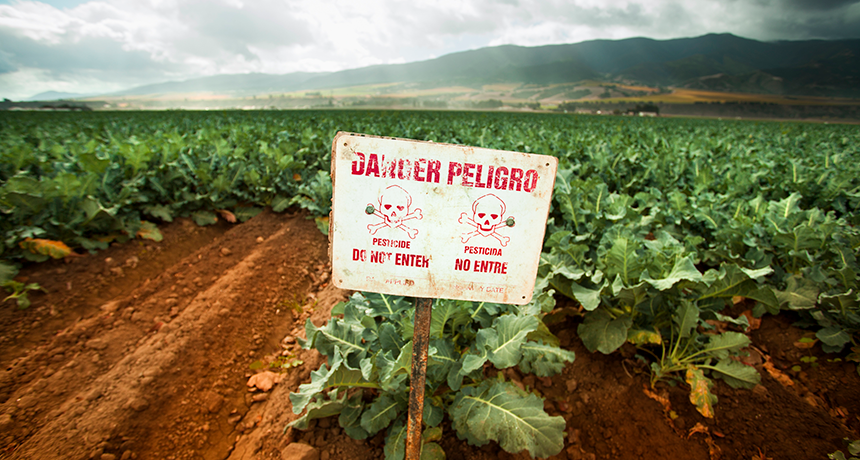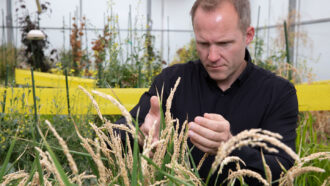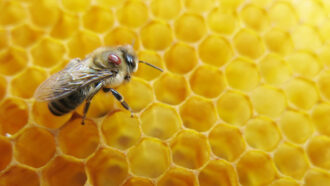U.S. farmers still use many pesticides that are banned elsewhere
American companies, not the government, drive most decisions on whether to phase out chemicals

The United States lags behind other agricultural nations in banning potentially harmful pesticides, a new study suggests.
Pgiam/iStock/Getty Images Plus
The United States restricts fewer potentially harmful pesticides than other major farming nations. That’s the conclusion of a new study of pesticide use and laws.
Nathan Donley works at the Center for Biological Diversity, an environmental group in Portland, Ore. He studies how toxic chemicals affect people and the environment. His new study focused on the chemicals used to limit pests on farm crops. Some of these pesticides also can harm people, wildlife and the environment. Such health risks have led certain countries to avoid or even ban the chemicals’ use. Donley compared the pesticides allowed on U.S. farms to those used in the European Union, Brazil and China. Those regions are three of the world’s other leading pesticide users.
The United States widely uses many chemicals that are banned or being phased out elsewhere, Donley found. What’s more, few of the pesticides that are no longer being used in the United States are banned by the government. Instead, pesticide companies just stopped making them.
Donley reported his findings June 7 in Environmental Health.
Donley reviewed more than 500 pesticides that have been used on U.S. farms. He looked at whether they are approved, or allowed to be used, in other countries. He found that 72 pesticides approved in the United States are banned or being phased out in the European Union. That was also true for 17 pesticides in Brazil and 11 in China.
In fact, 10 of the top 25 pesticides used in the United States are banned in at least one of the other three regions. Paraquat (PAIR-uh-kwat) was one such chemical. It causes some 100 U.S. poisonings each year. It is outlawed in all of the other areas in the study.
Very few chemicals face stricter laws in the United States than abroad. Of pesticides banned in the United States, only two are approved in the European Union or China. Only three are legal in Brazil.
Just because a chemical is approved doesn’t mean it is used, however. So Donley studied yearly pesticide use recorded by the U.S. Geological Survey. From that, he figured how much of the use was from chemicals banned elsewhere.
In 2016, U.S. farms used 544 million kilograms (1.2 billion pounds) of pesticides. More than one-fourth — 146 million kilograms (322 million pounds) — were pesticides banned in the European Union. Twelve million kilograms (26 million pounds) were banned in Brazil. And 18 million kilograms (40 million pounds) of these chemicals were outlawed by China.
Donley also wanted to know who decides which pesticides can be used. The Environmental Protection Agency, or EPA, regulates those used in the United States. Since EPA’s founding in 1970, just 134 pesticides have stopped being used in the United States. EPA outlawed only 37 of them. And of theses, just five were withdrawn in the past 18 years.
Pesticide companies chose to remove the other 97 from store shelves. Why? It’s costly to keep them registered with the EPA, Donley notes. And many were no longer widely used at the time they were withdrawn or canceled. So manufacturers may have decided the pesticides didn’t sell well enough to keep making them.
That means the U.S. government plays a smaller role in controlling pesticides than do the companies that make those chemicals. So, Donley argues, pesticide choices on American farms may be driven more by money than by health risks.







